Goldfrapp Head First album review: track-by-track
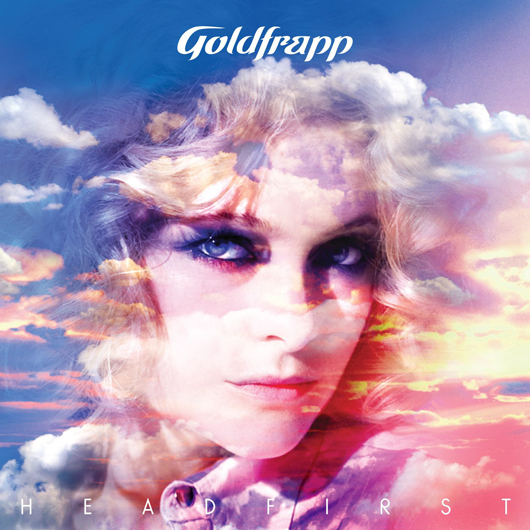
Goldfrapp Head First (intro)
Released today (22 March), Goldfrapp's new album Head First is a glorious - if unexpected - foray into pure ‘80s pop.
Goldfrapp have ditched the acoustic guitars from their folktronic 2008 album Seventh Tree and replaced them with massive synthesizers, effortlessly catchy hooks and staccato Giorgio Moroder basslines.
If the aim was to make a more commercially viable album than Seventh Tree, they’ve succeeded almost to the point of looking sarcastic.
This uplifting work is new territory for the duo. While they’re clearly comfortable behind a synthesizer and know a thing or two about pop hooks, most of their previous electro work - 2003’s Black Cherry and 2005’s Supernature in particular - resonates with dark haunting menace.
Head First, however, is filled with instant hits that sound like late period Fleetwood Mac, ELO and even ABBA. It was written and recorded in six months and features a string of startlingly well-executed ‘80s pastiches.
The real trick, however, isn’t just recreating the past, it’s breathing new life into this vintage style.
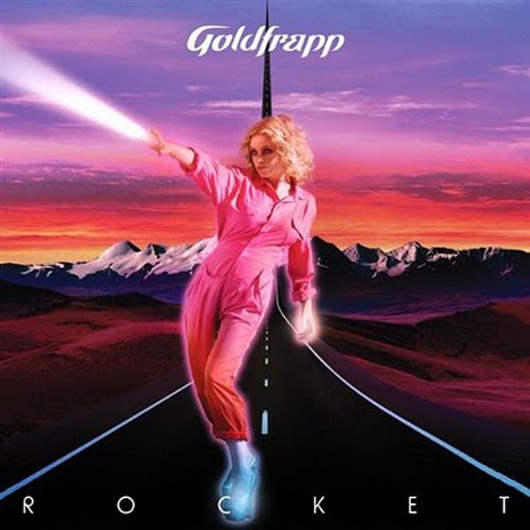
Rocket
Rocket immediately acts as a statement of intent for the whole album. In a nutshell, it’s a flawless ‘80s hit brimming with uplifting synths and an infectious sing-along chorus.
It opens with the obligatory (and only slightly camp) rocket sound but within 20 seconds the vocals kick in and it’s like Stevie Nicks singing over Van Halen’s Jump.
The squeaky-clean synth stabs and neatly compressed bass track are a distinct step away from Goldfrapp’s previous electro outings, which tended toward being ghostly or super-sleazy.
In Rocket Goldfrapp are comfortable, if not defiantly unashamed, of making highly polished electro-pop.

Believer
Believer takes the ‘80s baton and runs with it. Like Rocket, it’s one of the five tracks on Head First to benefit from additional production from Pascal Gabriel - the chief songwriter from dance pioneers S’Express. (The others are Dreaming, Head First and I Wanna Life.)
Gabriel’s more recent work includes bringing ‘80s authenticity to Kylie Minogue, Rachel Stevens, Miss Kitten and Little Boots.
His skills are put to good use as Believer starts with a phasing synth riff and simple one finger bassline that belie its anthemic chorus.
Here it opens up to a symphony of shimmering synths and a catchy hook that’s more than a little reminiscent of Grace’s Not Over Yet.
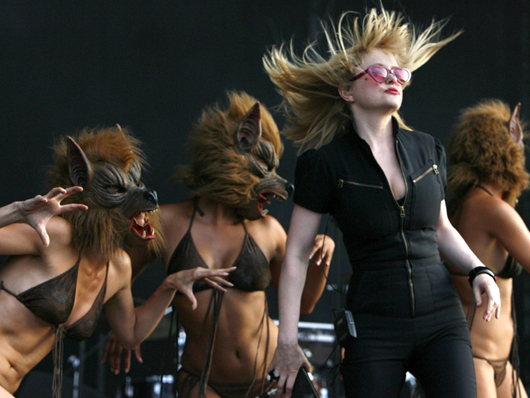
Alive
An oddball track on the album, Alive was the only song to be polished-up by Richard X, the electro producer and bootlegger who briefly made the Sugababes acceptable to musos.
It’s arguably more ambitious than the rest of the album and the wailing electric guitars and piano owe more to ELO than the electro purists who prop up most of Head First.
That said, Alive is peppered with electro references and callbacks. There are occasional Gary Numan synth breaks, irresistible arpeggiated bleeps and even an electro-hop breakdown - thank you Richard X.
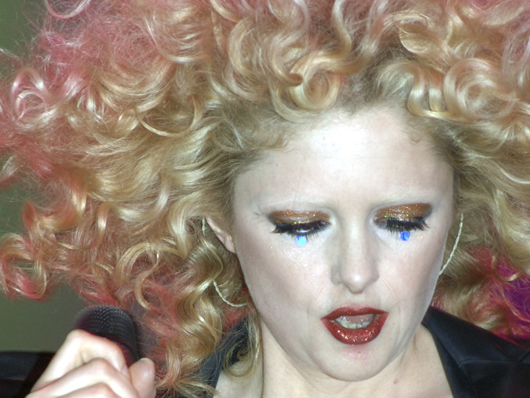
Dreaming
Dreaming is a return to the established pattern of the album. It opens with a Giorgio Moroder-esque synth part and builds to include Alison Goldfrapp’s less-icy-than-usual vocals.
So far so expected, which exposes the biggest potential problem with Head First: it’s all very well recreating ‘80s pop songs but how do you do that over an album without it getting dull or, even worse, sounding cheesy?
The answers are in the production and the extra flourishes that break style. Here, a rogue discordant synth part is a refreshing reminder that you’re not listening to Girls Aloud getting on their electro tip.

Head First
According to Will Gregory (Goldfrapp’s chief songwriter), Head First was meant to be an exercise in writing melody and getting closer to the essence of a song.
Head First achieves this by sounding insanely like an ABBA song. It’s an irresistible nugget of pop that builds up from an unassuming start to a euphoric crescendo of big ‘80s drums, a choir of chanting Alison Goldfrapps and a fanfare of synthesizers.
Head First fulfils its melodic potential and then some.
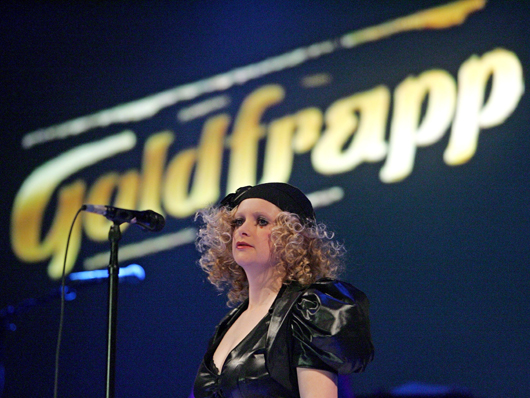
Hunt
Hunt is a technically playful track that harks back to the uneasy darkness and bleak electro of Black Cherry.
A two-note loop practically fends for itself while synths fade up and then disappear to nothing. This is the strongest example of the light touch that pervades Head First and shows how restraint is key to the sound rather than overloading.
Hunt also features some effective vocal delay, which transforms Alison’s voice into a breathless percussion track - a neat trick and tastefully executed, even if it’s not really pushing the boundaries.

Shiny and Warm
The strongest opening on Head First by a mile, Shiny and Warm throws Goldfrapp back into their Supernature territory of glitzy riffs and instant earworms.
Here, a strict bassline and marching beat are juxtaposed against slurred and breathless vocals that sound like the most seductive of pillow talk.
Again, this song benefits from a restraint that keeps it almost minimalist. We’re teased with the prospect of squelchy bass notes and Depeche Mode synth stabs but they’re quickly faded out.
Of course, part of the genius is we get all of them in abundance when Shiny and Warm blows up for the final chorus.

I Wanna Life
This is proof that Goldfrapp aren’t afraid to completely embrace the shamelessness of feel good ‘80s pop music. I Wanna Life could easily be early Madonna or late Fleetwood Mac.
The heart of the song is its triumphant chorus. The vocals are given an ABBA-inspired chorus treatment and an orchestra of synthesizers creates an ‘80s wall of sound.
This might be at odds with the careful restraint exercised elsewhere on the album but the explosion is meticulously controlled and the perfect canvas for Alison Goldfrapp’s euphoric singing.
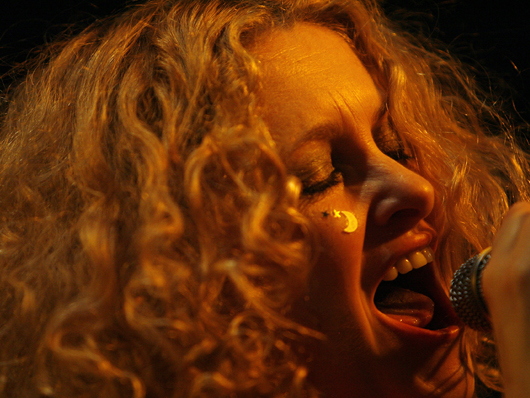
Voicething
This ethereal soundscape is a bit of technical noodling to sign off the album. It picks up the vocal looping technique from Hunt and pushes it to its logical conclusion - a hundred voices working as synthesizers and percussion to create a song.
Thankfully, it’s not quite Justin Timberlake getting his beatbox on at the end of Rock Your Body. There are pulsating synthesizers interwoven with cuts of Alison Goldfrapp’s vocals to create a rich texture that meanders through Sigur Ros style atmospherics.
However, Voicething doesn’t seem to fit with the ‘80s conceit set out by the rest of Head First. It’s a lingering goodbye and perhaps a bit of a let down for anyone smitten with the rest of the album.
Liked this? Now check out 15 ultimate synth icons
Buy Goldfrapp's Head First here: HMV | iTunes | Amazon
Connect with MusicRadar: via Twitter, Facebook and YouTube
Get MusicRadar straight to your inbox: Sign up for the free weekly newsletter